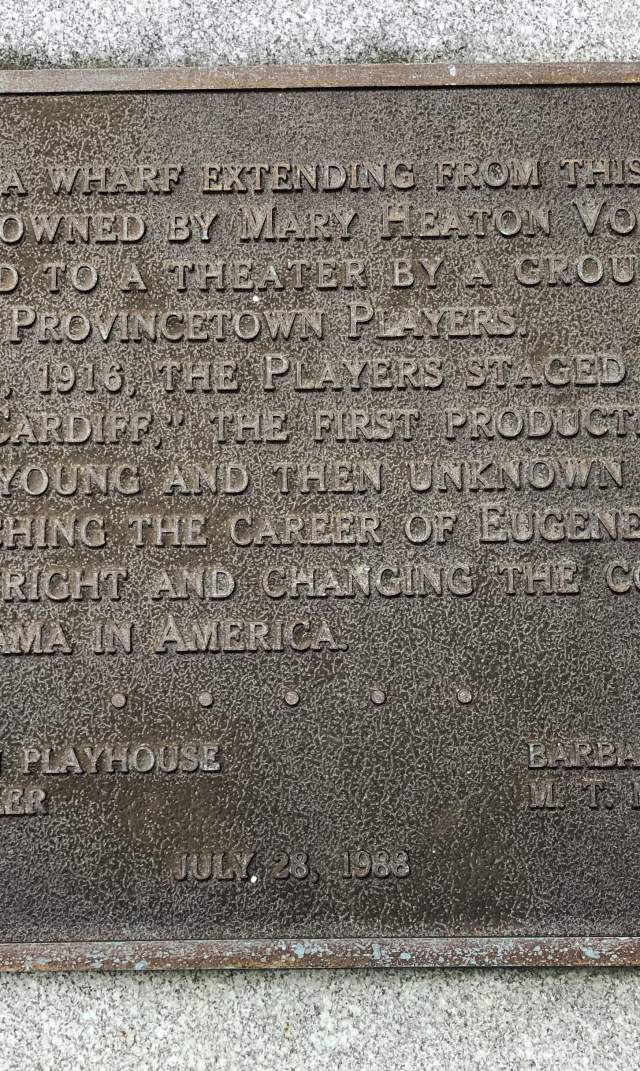In celebration of Women’s History Month, we’re calling out a group of fearless and fiery females from Cape Cod’s past and present throughout March, to honor these women’s vital contributions to American history and society.
Don’t recognize all these heroines from history class? There’s no time like the present to learn and share their exhilarating stories—one of the best ways to observe and commemorate herstory! With inspiration literally in your backyard, why not partner up with one of the fabulous ladies you cherish and admire from your own life and visit these local points of interest, museums, and dedications to the champions who paved the way for the women of today.
The first blog of the series salutes the accomplishments of local women who left their mark in education, literature, and the arts.
Katharine Lee Bates
Falmouth-born poet and author Katharine Lee Bates (1859-1929) penned our nation’s unofficial national anthem, “America the Beautiful,” while riding the rails from Massachusetts to Colorado in the summer of 1893. A graduate and early developer of Wellesley College, Bates became a professor and eventually head of the college’s English Literature Department, which she helped establish as a field of university study (by writing the subject’s very first textbook). Thank you from American Lit students everywhere! This remarkable woman also authored travel books, children’s books, essays, and published a multitude of poetry. Still she found time to mentor rising poets like Robert Frost.
Dedications: Head to Falmouth’s Main Street to view the Bates family’s former 1810 home, lovingly restored by private buyers just off the village green, and look for the dedicated street sign hailing “Katharine Lee Bates Road." The “Shining Sea Bikeway” rail trail is aptly named in honor of America’s most patriotic song and runs from North Falmouth to Woods Hole (there’s a commemoration plaque near mile marker 2). You’ll find a statue of Bates standing proudly year-round on the Falmouth Library lawn, but if you really want something to sing about, visit when the blooming cherry trees are surrounding her in a sea of pink blossoms!
Adele R. Heller
Passionate supporter of the arts Adele R. Heller (1922-1997) revived the historic Provincetown Playhouse as owner and producing director, and continued to memorialize the plays of Eugene O’Neill, which first debuted onstage in Provincetown. She was the prolific author of 1915, the Cultural Moment, an academic study of this pivotal year in American theatrical history and the era’s progressive movements, that is still widely referenced today. Before leaving New York to settle for good on Cape Cod, Heller worked for Adam Clayton Powell, America’s first African American Congressman, and helped found our nation’s Head Start program. An accomplished artist herself, Heller was an award-winning haiku poet and concert pianist who championed musical and artistic life in Provincetown, where she spent every summer until finally relocating in 1980.
Dedications: A visit to the Provincetown Playhouse permanent exhibit at the Pilgrim Monument & Provincetown Museum brings early American theatre and the playhouse to life just as Heller did in her day. A stroll down Commercial Street will bring you to the bronze plaque erected by Heller herself - where the Provincetown Playhouse first stood - with an inscription that reads: “In 1915, on a wharf extending from this site, a fish shed owned by Mary Heaton Vorse was converted to a theater by a group later named the Provincetown Players.” Finally, the plaque at 2 Gosnold Street marks the location of the third Provincetown Playhouse Heller took over, now home to daughter Julie Heller’s art gallery.
Rosemary Rapp
An artist and avid collector herself of early American and 19th century artwork, Rosemary Rapp founded the non-profit Cahoon Museum of American Art in Cotuit in 1984. She followed her fervent desire to preserve the story, artwork and historic structure that served as the home and studio of celebrated Cape Cod artists Ralph Cahoon (1910-1982) and Martha Cahoon (1905-1999), who worked side by side as decorative furniture painters and folk artists. In true visionary fashion, Rapp undertook a major museum renovation and remodel to increase accessibility and double exhibition space, which was completed and celebrated in 2016. Today’s museum collection includes American art representing nearly every medium, including fine art, contemporary and three-dimensional art, works on paper, and furniture dating from the 18th century to the present.
The elegant Rosemary Rapp remains involved and very active with the Museum today and serves as chair of the Collections and Exhibitions Committee. This local landmark serves as a gift of cultural resource to the community and promotes art education through a robust program calendar.
Read the second in our Women's History Month blog series here>
Read the third in our Women's History Month blog series here>

